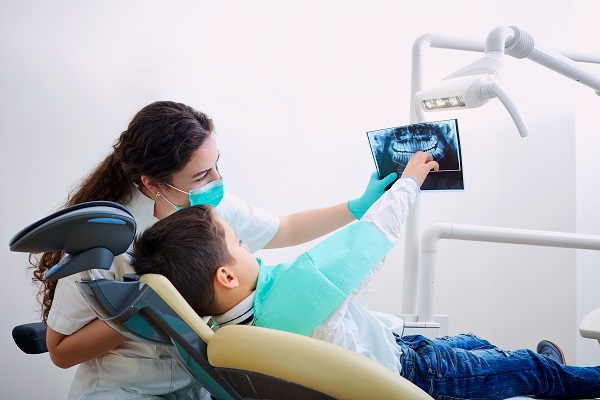Three Common Types of Early Orthodontic Treatment

The primary goal of early orthodontic treatment is to prevent and fix bite misalignments. Several causes, including genetics, the premature loss of primary (baby) teeth, and harmful oral habits (like thumb sucking) may lead to such anomalies. Orthodontic abnormalities might be congenital or occur during early childhood. Straight teeth can reduce the incidence of dental decay and childhood periodontal disease, whereas crooked teeth lower self-esteem and make proper oral hygiene harder. This article covers the three major forms of early orthodontic treatment often recommended by pediatric dentists.
Types of early orthodontic treatment
Your pediatric dentist can use a variety of diagnostic techniques during biannual checkups to evaluate orthodontic anomalies and, if required, adopt early intervention measures. Before reaching eight years old, children should have received their first orthodontic assessment. Three early orthodontic treatments are used by orthodontists, depending on the patient's age.
Phase one treatment (two to six years old)
The goal of early orthodontic treatment is to control and guide the width of both dental arches. The major objective is to provide the permanent teeth ample room to emerge properly. Ideal candidates include children with biting difficulties, premature baby teeth loss, clicking or grinding jaws, and those who breathe via their mouth (instead of nose).
With the phase one treatment, the pediatric dentist works with parents and children to break undesirable oral habits such as thumb sucking and excessive pacifier usage. The dentist may also recommend one of many dental appliances to help encourage jaw growth, preserve the gap for incoming adult teeth (space maintainers), or keep teeth from moving out of their positions.
Phase two orthodontics (six to twelve years)
Phase two orthodontics aims to realign misaligned jaws, repair crossbites, and start the process of gradually correcting mispositioned permanent teeth. The soft and hard tissues of the oral cavity are particularly malleable at this stage of development. In some respects, this is an ideal moment to start treatment for severe malocclusion.
The dentist may recommend a dental appliance for the child at this point. Orthodontic options can be fixed or detachable – braces and aligners are the most popular options. The child will be able to talk, eat, and chew normally, irrespective of the device. Children who have fixed dental appliances, on the other hand, should take special care to clean their oral cavity every day to avoid discoloration, decay, and subsequent aesthetic issues when the treatment ends.
Phase three (adolescents)
Orthodontic therapy is most frequently associated with adolescents' teeth. Straightening permanent teeth and enhancing the cosmetic look of the smile is part of the main objective of adolescent treatment.
Typically, the dentist will place permanent or removable "braces" on the teeth during this time to progressively straighten them. The teenager may need to wear a retainer after completing orthodontic treatment to prevent the teeth from reverting to their original position.
In conclusion
Please contact the dental office to book an appointment if your child is between the ages of seven and eight and it looks like they might need early orthodontic treatment. The pediatric dentist will do an initial examination on your child and discuss the best strategies to help them improve their smile.
Request an appointment here: https://www.ucsmilesortho.com or call UC Smiles Orthodontics at (210) 672-1054 for an appointment in our San Antonio office.
Check out what others are saying about our services on Yelp: Read our Yelp reviews.
Related Posts
Phase Two orthodontics is the second stage in comprehensive orthodontic treatment, typically following an initial intervention known as Phase One. The primary objective of Phase Two orthodontics involves perfecting alignment, correcting bite issues, and achieving optimal aesthetics and function. Patients often undergo Phase Two orthodontics during adolescence, once most permanent teeth have emerged, allowing for…
Early orthodontic treatment — or Phase One orthodontics — addresses children's dental and jaw development issues before all their permanent teeth emerge. This treatment can prevent severe orthodontic problems and reduce the duration of treatment in the future. Early assessment and intervention can provide long-term benefits, making Phase One orthodontics a proactive solution for your…
An orthodontist strikes a balance between the least intrusive and the most effective treatments. For jaw misalignment, treatment almost always requires a combination of different measures. Here is what you need to know about how an orthodontist corrects this particular orthodontic problem.The nature and severity of orthodontic problems vary from person to person. Some people…
Wondering if ceramic braces are the right teeth straightening option for you? There are a few different types of braces available nowadays. While traditional metal braces are a common choice amongst teenagers, the majority of adults are looking for a more discreet option. Especially adults who find themselves in a position in which they need…
